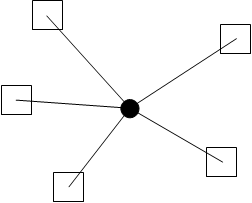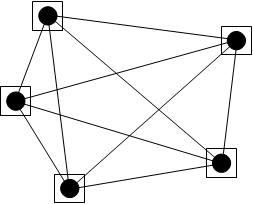Independent or dependent?
Years ago, roboticist and engineer Rodney Brooks became known for his work with the insect robots. His approach to robotics and AI was at 1st considered unorthodox. Before this, engineers wanted robotic AI systems to mimic human thought the processes. The machines were believed to stand alone and be capable of operating independently of humans or the other machines. But Brooks believed that insect intelligence may be superior to humanlike intelligence in various applications. Support for his argument came from fact that the insect colonies are highly efficient, and they survive adversity better than the higher life forms.
Insect robots
Insect robots operate in large numbers under the control of a central AI system. A mobile insect robot has many legs, the set of wheels, or the track drive. The 1st machines of this type, which were developed by Brooks, looked like beetles. They ranged in size from over a foot long to less than a millimeter across. The most significant is the fact that they worked collectively.
Individual robots, each with its own controller, do not work well together necessarily in a team. This should not be very surprising; people are the same way. The professional sports teams have been assembled by buying best players in business, but the team will not win unless the players get along properly. Insects, on the contrary, are stupid at the individual level. Ants and bees are like idiot robots, or, conceivably, like ideal soldiers. But an anthill or beehive like a well trained military unit is the efficient system, controlled by powerful central brain.
Rodney Brooks saw this fundamental difference among autonomous and collective intelligence. He saw that his colleagues were trying to build autonomous robots, perhaps because of the tendency for humans to envision robots as humanoid. To Brooks, it was obvious that the major avenue of technology was being neglected. Therefore he began designing robot colonies, each comprising of several units under control of the central AI system.Brooks envisioned microscopic insect robots which may live in your house, coming out at night to clean your floors and countertops. Antibody robots of even smaller proportions could be injected into a person infected along with some previously incurable disease. Controlled by the central microprocessor, they could seek out disease bacteria or viruses and swallow them up.
Autonomous robots
A robot is autonomous if it is self contained, housing the computer system of its own, and not depending on the central computer for its commands. It gets around under the power of its own, usually by rolling on wheels or by moving on 2, 4, or 6 legs.Figure given below shows the locations of controllers in robot systems. The robots are shown as squares and controllers as solid black dots. In drawing at A, there is one controller only; it is central and is common to all individual robots. The com-

Figure--Controllers in robot systems.Squares represent robots, and dots represent the controllers. Straight lines represent the possible communication paths. At point A, an insect robot fleet; at point B, a set of autonomous robots.

puter communicates with, and coordinates, robots through wires or fiber optics or by radio. In drawing at B, each robot has its own controller, and there is no central computer. Straight lines show possible paths of the communication among robot controllers in both the scenarios.Simple robots, like in assembly lines, are not autonomous. More complex the task, and the more different things a robot should do, the more autonomy it will have. The most autonomous robots have AI. The ultimate autonomous robot will behave like a living animal. Such type of machine has not been developed yet, and it will probably be at least year 2050 before this level of sophistication will be reached.
Androids
An android is a robot, very sophisticated, which takes a more or less human form. An android propels itself usually by rolling on small wheels in the base of it. The technology for fully functional arms is the under development, but software required for their operation has not been made cost effective for small robots. Legs are difficult to design and engineer and are not really necessary; wheels or track drives work well enough. An android has a rotatable head equipped with the position sensors. Binocular, or stereo, vision allows android to perceive depth, thereby locating objects anyplace within the large room. Speech recognition and synthesis are quite common.
Due to their humanlike appearance, androids are perfect for use wherever there are children. Androids, in conjunction with the computer terminals, may someday replace school teachers in some of the situations. It is possible that teaching profession will suffer because of this, but it is more probable that the opposite will be true. There will be a demand for the people to teach children how to use robots. Robots may free human teachers to spend more time in areas such as humanities and philosophy, while robots instruct students in computer programming, arithmetic, reading, and other rote memory subjects. Robotic teachers, if used responsibly, may help us raise the children into sensitive and compassionate adults.